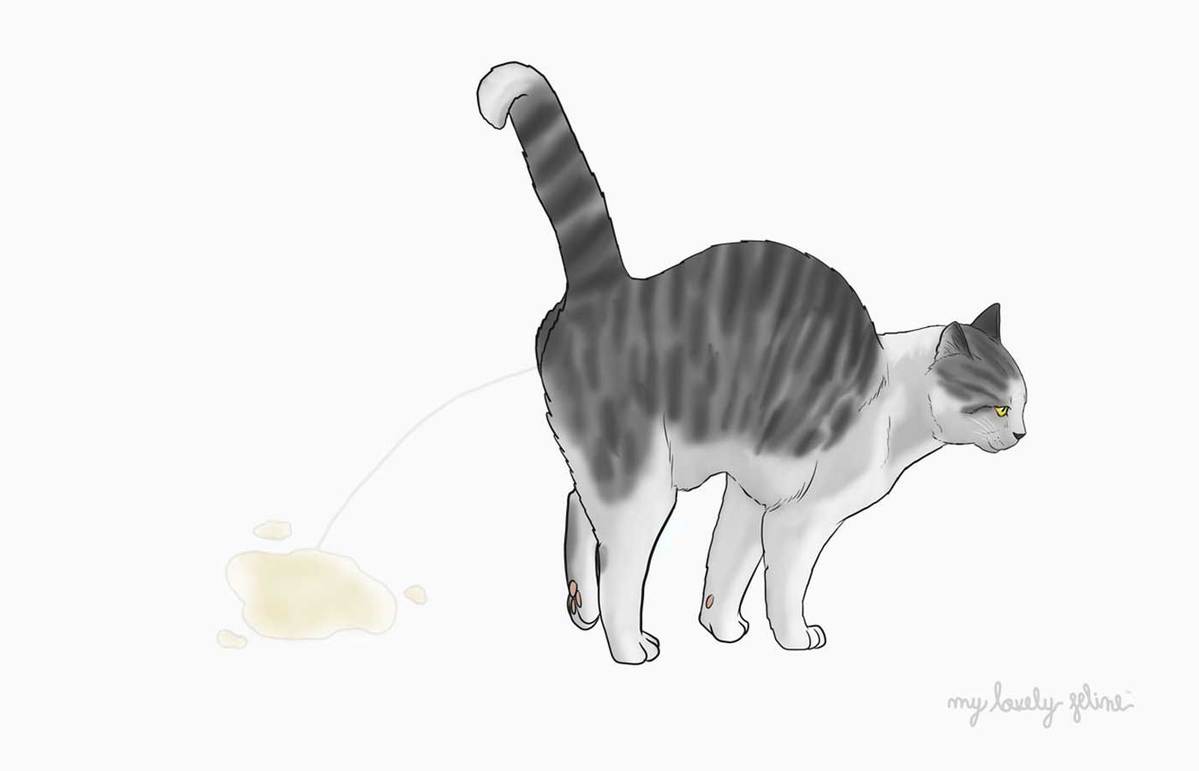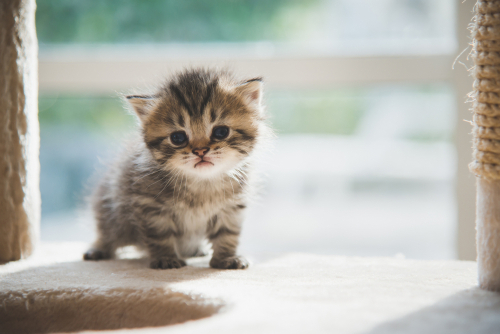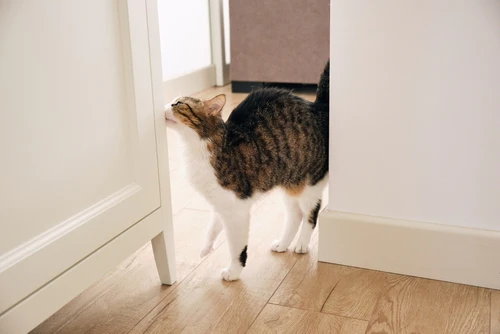
| The smell hits your nose, and you know it—there’s cat pee somewhere where it shouldn’t be. Spraying and marking behavior is a challenging issue to address, but that’s why I’m here. Let’s get started. |
Spraying Definition
Spraying is when a cat pees a small amount of pee, typically onto a vertical surface. They will stand by a wall, tail up, and spray urine on the wall—their tail might also shake.
This is usually a behavior done to mark territory. The cat may be insecure or stressed and marking the wall is their way to spread their scent, feel secure, and communicate with other cats.
If your cat is emptying their entire bladder, that is called house soiling and is usually handled differently.
#1 Get an Enzyme Cleaner
Enzyme cleaners contain good bacteria that eat the bad stuff (i.e. pee and poop).
Following the direction on the bottle is key when you’re cleaning up an area where a cat sprayed. Many of them can take a full 24 hours to fully dry and work. It’s important to get rid of any gross stuff so that your cat doesn’t return to the same spot, smell their business, and go again.
#2 Rule Out Medical Issues
There are many medical issues that can cause your cat to spray or mark. One more common issue is urinary crystals, which can cause inflammation in the urethra and bladder. This can be very uncomfortable and cause your cat to mark.
A vet visit and urinalysis are needed to check for crystals, and it will also detect other urinary issues like a urinary tract infection (UTI) or chronic kidney disease (CKD).
Also, if your cat isn’t spayed or neutered, they may spray. This is part of communicating with other possible mates. Spaying or neutering decreases this behavior.





